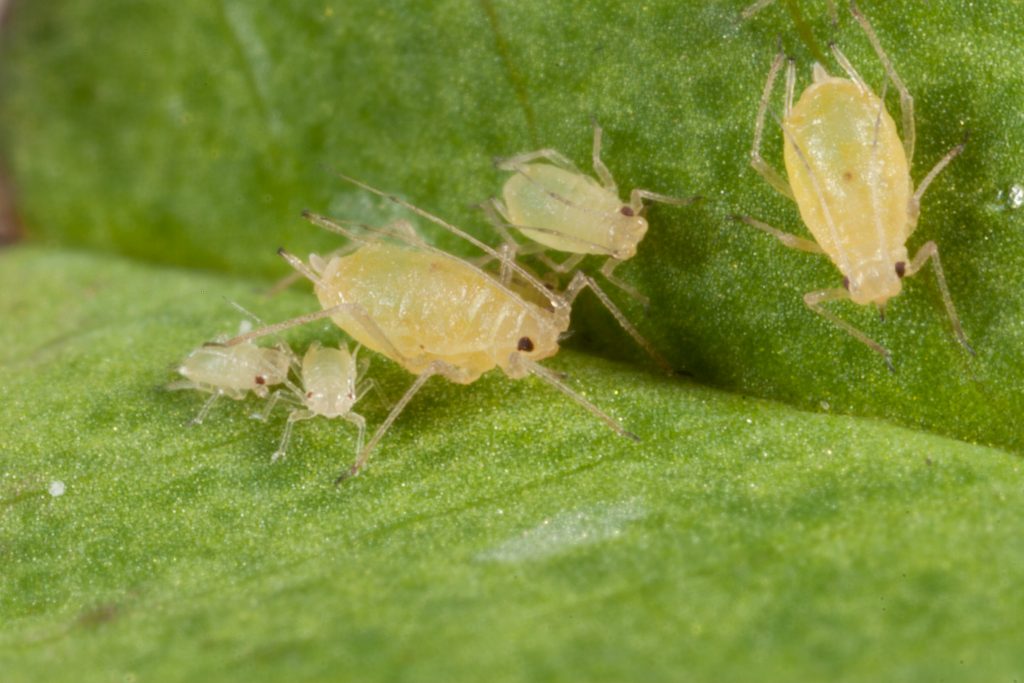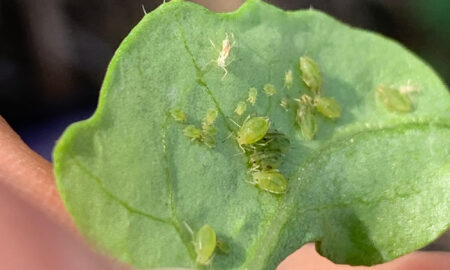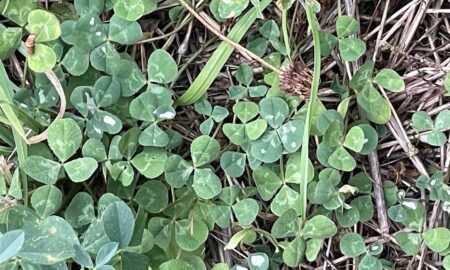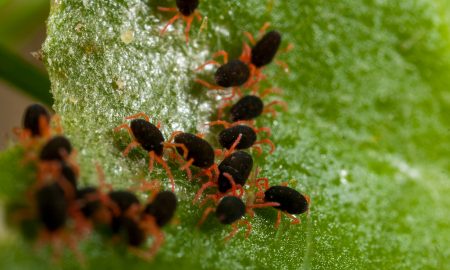Green peach aphid been observed in southern and central NSW in early flowering canola, along with possible turnip yellows virus symptoms. The virus is likely to be present across NSW and Victoria this spring, and management options will depend on the crop type and growth stage.
In this article, we’ll discuss the link between green peach aphid and turnip yellows virus and best management practices to avoid aphid build up and virus spread.
Green peach aphid reported in NSW
Reports of low to moderate numbers of green peach aphid (Myzus persicae) have been made in early flowering canola across southern NSW, and up towards Canowindra and Tottenham. There have also been observations of possible early turnip yellows virus symptoms in central NSW.
What links green peach aphid and turnip yellows virus?
Turnip yellows virus is a serious disease of canola, most recently causing extensive crop losses during a outbreak in 2018 when crops were infected during the seedling stage of development. The virus can also infect mustard, chickpea, lupin, lentil, faba bean, field pea, lucerne, medic and subterranean clover.
Green peach aphid is a very effective vector for a number of plant viruses. It can carry turnip yellows virus (previously beet western yellows virus), cauliflower mosaic virus, and cucumber mosaic virus. Canola is particularly susceptible to damage from all these viruses.
The green peach aphid has a very high (96%) transmission efficiency for turnip yellows virus. The virus is carried by the aphid for its whole lifespan and is transmitted during feeding. An infected aphid can infect a plant after only 15-30 minutes of feeding.
In previous years, there was found to be a high prevalence of turnip yellows virus in Victoria.
See our previous PestFacts article for more details

Symptoms of turnip yellows virus
Turnip yellows virus infection can stunt plant growth, and cause red or purple discoloration on the leaves. Lower leaves may also become stiff and curled.
Despite being a good indicator, symptoms are not a definitive diagnostic, as the indicators are shared with plant physiological stress symptoms.
It is also possible for plants to have a high infection load for turnup yellows virus, but show few symptoms. The viral load can still lead to the production of fewer pods or lower quality pods, so testing is important. Get in contact with your local state government department for testing services.
For information on turnup yellows virus and testing services see the Agriculture Victoria website
Turnip yellows virus potential for crop damage
Turnip yellows virus is spread by vectors such as aphids, rather than being seed borne. This means that although many paddocks of susceptible crops will have at least a few infected plants, that the virus does not become a problem until aphids transfer the virus between plants.
Infections occurring in spring have significantly less impact on crop yield compared with autumn infections, despite the warmer weather being more conducive to increased aphid numbers.
Although the potential for virus spread is highest in spring, yield loss due to infection decreases at later stages of crop development after stem elongation and flowering. Viral infections occurring after the rosette stage often have little effect on yield for most crops, however canola remains susceptible until the mid-podding growth stage. Infection after this stage causes minimal yield loss, though oil quality may still be affected.
Management tips
Turnip yellows virus is difficult to manage because chemical treatments do not work post-infection as they do with fungal diseases. Therefore, prevention of infection via monitoring and control of green peach aphid is the best defence.
Turnip yellows virus can persist in weeds and volunteer hosts during the summer, and is carried from these plants into crops by aphids, therefore controlling the green bridge is key to controlling turnips yellows virus next season.
Unfortunately, green peach aphids have evolved resistance to many groups of insecticides, meaning they can also be difficult to control with chemicals.
Latest update on Green peach aphid resistance
The transmission of turnips yellows virus can occur even when relatively few aphids are present, so existing green peach aphid thresholds do not prevent virus spread. But the good news is that many beneficial insects predate on green peach aphids, and therefore support turnip yellows virus management.
The most effective beneficial insects for aphids include hoverfly larvae, lacewings, ladybird beetles, damsel bugs, parasitoid wasps, and some naturally occurring fungi. If aphid predators and parasitoids are present they can often provide very effective control of aphids.
For further information on managing green peach aphid see the GRDC’s Best Management Practice Guide and the Green Peach Aphid Resistance Management Strategy.
It’s also important to note that as canola seed develops and ripens, and pods begin to senesce, they quickly become unfavourable for aphids as they are less able to probe the plant’s tissues. So the risk will reduce as the season progresses.
Spying green peach aphids in your crops?
Due to the risk of resistance evolution and virus transmission, we’re keeping a close eye on green peach aphid this year.
You can help us by making a report via:
- Texting or calling us on 0484 310 697
- Sending an email to pestfacts@cesaraustralia.com
- Tweeting us @cesaraustralia
- Making a report on the recently updated PestFacts south-eastern app
- Sending us a sample of green peach aphid.
Acknowledgements
Thanks to Matt Burkitt (Nutrien Ag) for providing field reports.
Cover image: Photo by Cesar Australia





